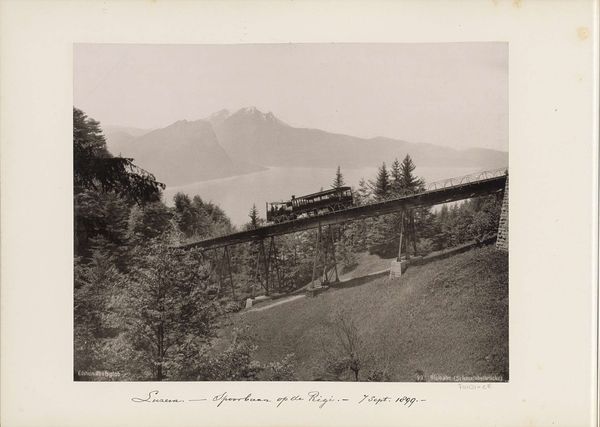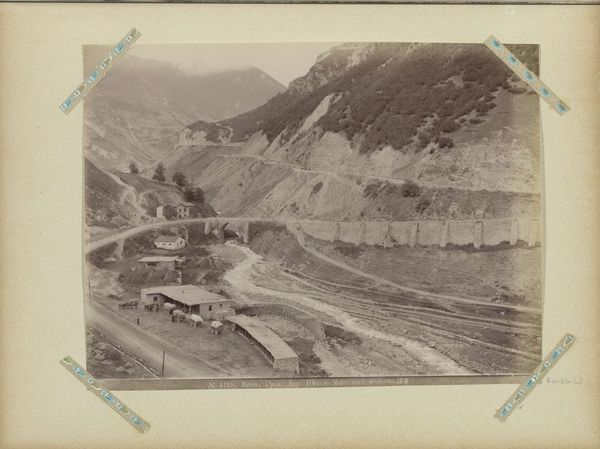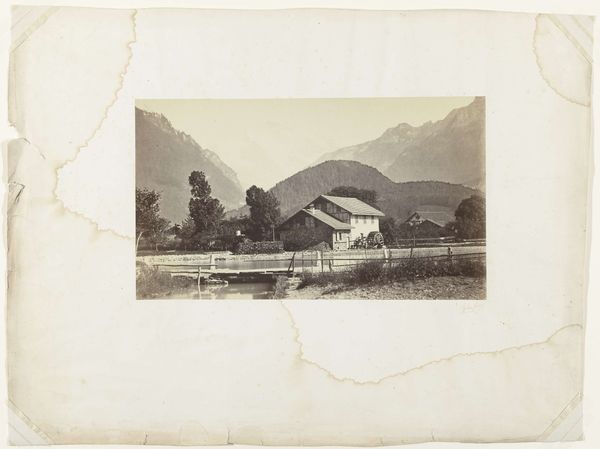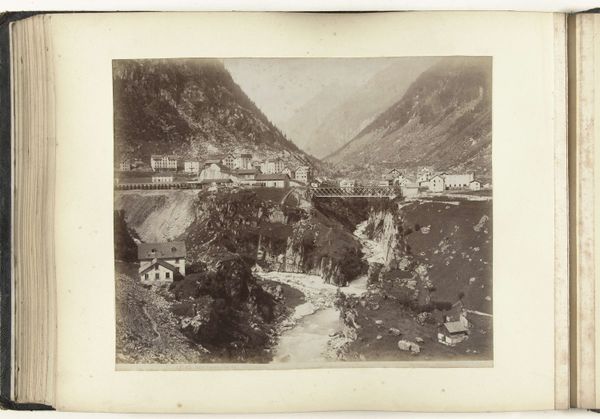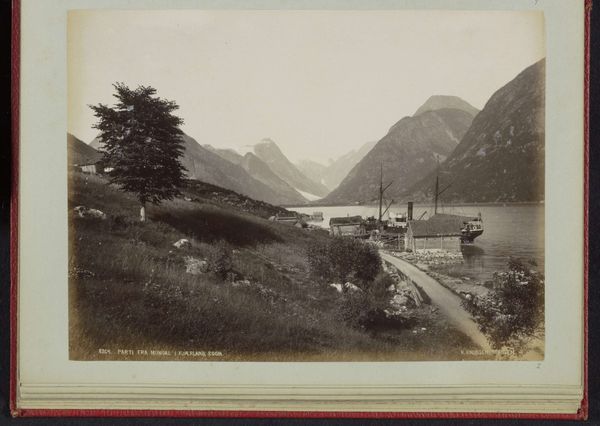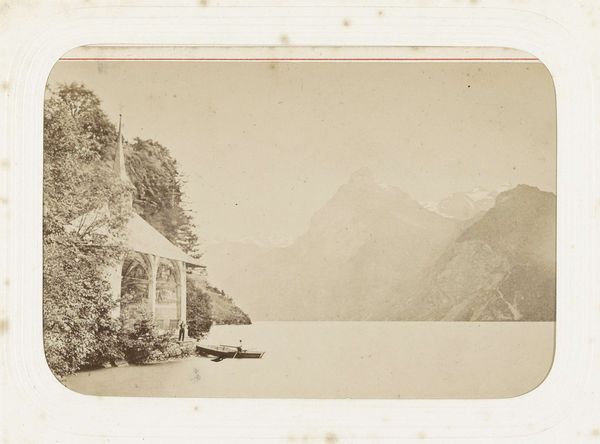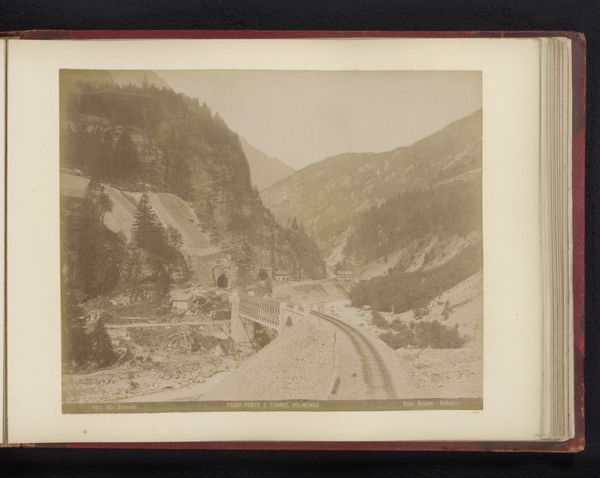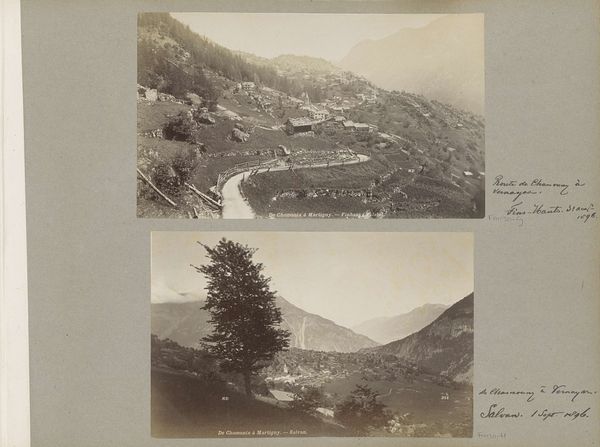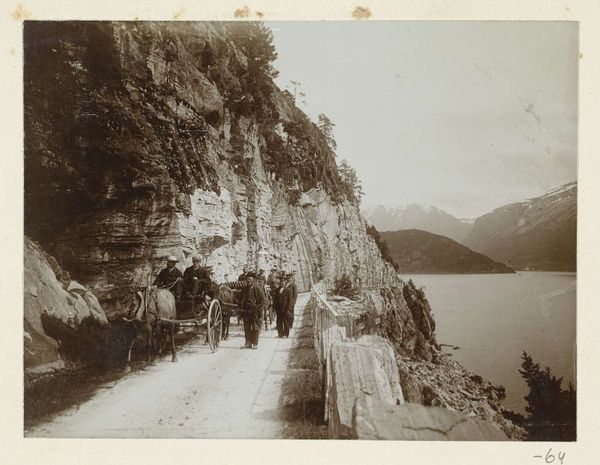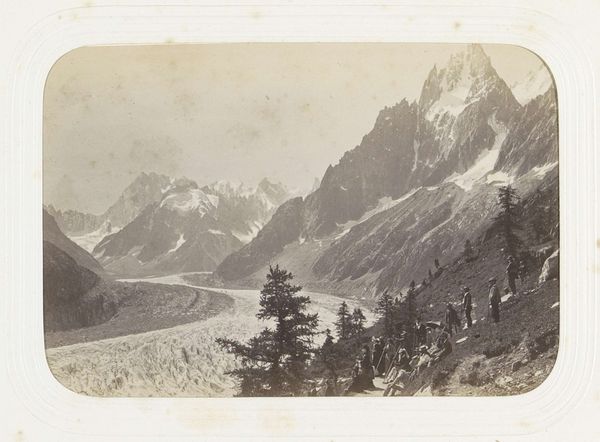
print, photography
# print
#
landscape
#
photography
#
cityscape
Dimensions: height 195 mm, width 243 mm
Copyright: Rijks Museum: Open Domain
Editor: This is an interesting print, "Treinstel op de Schnurtobelbrug van de Rigispoorbaan" by Giorgio Sommer, dating roughly between 1880 and 1910. It's a photograph of a train on a bridge in a landscape, and I find the sepia tones quite evocative. How do you interpret this work in the context of its time? Curator: Considering the social and technological climate of the late 19th century, this image speaks volumes. Railroads were symbols of progress, connecting disparate communities and fueling industrial growth. Photography, too, was relatively new, offering unprecedented means to document this transformation. Does the elevated perspective on the landscape suggest anything to you? Editor: Perhaps a deliberate highlighting of progress dominating nature? Or an invitation to marvel at human engineering within a sublime landscape? Curator: Precisely. The positioning implies an elevated status, literally and figuratively, celebrating human ambition. We must also consider the public role of photography. Who was this image intended for? Was it promotional, aimed at attracting tourists to the Rigi railway? Or perhaps meant to showcase Switzerland's modernity on an international scale? Editor: It's interesting to think about its purpose beyond just documentation. Was there a particular visual language used in these types of images back then? Curator: Absolutely. Think of the idealized landscapes often depicted in paintings of the time, adapted to this new medium. Sommer frames nature, not raw and untamed, but harnessed and accessible through technological advancement. Notice how the train integrates but also disrupts this "natural" view. The politics of the image lie within the choices of framing, what's emphasized, and the intended audience's understanding. Editor: I hadn't considered the tourist aspect and the framing of "accessible nature." This really changes how I initially saw this piece. Thanks for offering such insight! Curator: My pleasure! It highlights the layered historical meanings within even what seems to be a straightforward landscape photograph.
Comments
No comments
Be the first to comment and join the conversation on the ultimate creative platform.
